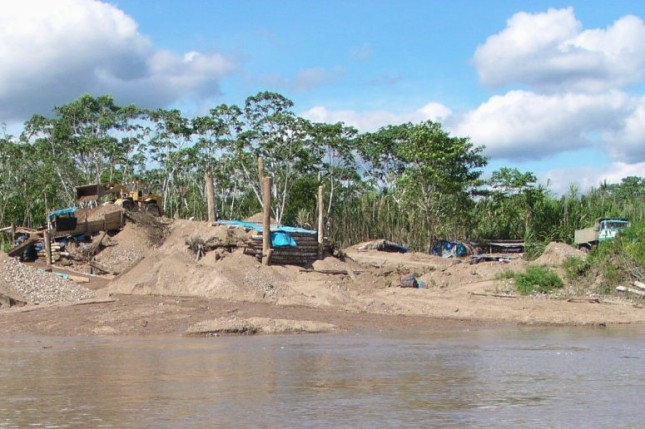-
Lisa Palmer, Mongabay
Precision conservation: High tech to the rescue in the Peruvian Amazon
August 28, 2019 By Wilson Center Staff
The mother capybara and her three babies chew on grasses along the Los Amigos River as we drift near. Around a bend, white caimans fortify each sandbar, mouths open, waiting. Kingfishers plunge into the water to retrieve a morning meal, as oropendolas fly overhead. Spider monkeys and red howlers balance in the treetops of the soaring canopy 30 to 60 meters (100 to 200 feet) high that lines both riverbanks.
Much of this Amazon landscape in southern Peru could soon go missing — lost to the roaring suction pumps, scouring vacuum hoses and mercury poisoning that comes with artisanal gold mining, or the chainsaws that accompany illegal logging — but for the two men we ride with in our boat. They and others like them are implementing elements of precision conservation, a Silicon Valley approach and high-tech synthesis using drones, acoustic monitoring, machine learning, lidar and thermal imaging, applied to protecting the most biologically diverse region on Earth.
Percy Avalos sits at the bow of the canoe, pointing to floating logs and other hazards, as Davis Vargas steers the peque-peque, a tiny motor adapted to negotiate the shallows of this meandering, lowland river that borders one side of the nearly 500-kilometer (300-mile) perimeter of a vast conservation concession.
I departed in the fog at dawn to join Vargas and Avalos on their weekly river patrol, leaving from the shore of the tropical Los Amigos Biological Station and Concession that buffers the eastern side of Manú National Park, considered by many to be the single most biologically important protected area in Latin America.
Source: Mongabay
Photo Credit: Illegal gold mining operation in 2004. Photo by Lisa Palmer. All rights reserved.
Topics: biodiversity, conservation, development, environment, land, minerals, natural resources, security
 A Publication of the Stimson Center.
A Publication of the Stimson Center.



